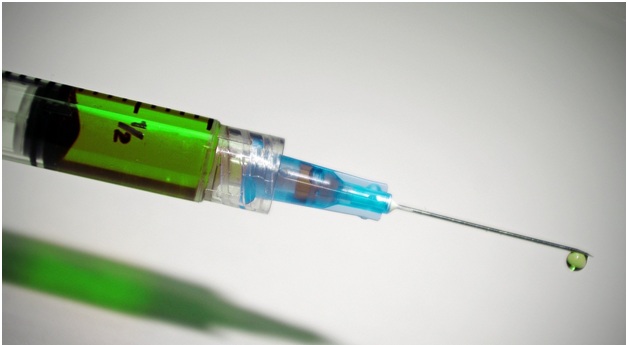Sports and athletic activities require maximal physical fitness and strength. The use of performance enhancers to facilitate athletic activity and effort is common in sports. The most commonly used enhancers are anabolic steroids, which are also informally referred to as roids.
Anabolic-androgenic steroids (AAS) are either natural or synthetic androgenic steroids with testosterone-like properties and effects, which is the reason behind why athletes become competitive and feel the adrenaline rush after taking these steroids.
Anabolic steroids are administered in a closely-monitored environment and only taken after they’re specifically prescribed by a health practitioner who takes into account the athlete’s individual requirements.
When used without care, performance enhancers can lead to serious health consequences and even death.

Table of Contents
Anabolic-androgenic steroid addiction
A common question about whether or not AAS are addictive is often raised. Yes, steroids are addictive and can lead to dependency issues much like ones induced by other drugs. Another problem with using performance enhancers is that they lead to tolerance, which means that after some time, you’ll need a higher dose to get the same effects as were experienced the first time.
Lastly, steroid users also go through withdrawal symptoms, which is further proof that they can be addictive.
Substance dependency is becoming increasingly common. However, the good news is that one can recover from substance dependency, provided that proper rehabilitation and supervision is given. Treatment and recovery facilities, like The Palm Beach Institute, specialize in helping you detox, reprogram your mind, and help you get your life back on track.
Uses of anabolic-androgenic steroids
When used under the guided supervision of an expert, AAS has undeniable potential benefits, including increase in muscle mass, fat reduction, increase in muscle strength and power, increase in bone mineral density, improved recovery from tissue injury, and increase in red-cell production. These effects not only have been used for athletes but are applicable in various disorders where the loss in muscle mass is common, i.e., AIDS and cancers.
Toxic systemic effects of anabolic-androgenic steroids
An early diagnosis and treatment will make recovery swift and minimize damage. Some common symptoms and signs suggestive of the harmful effects of AAS include:
Cardiovascular effects
Some of the common cardiac complications brought on by the use of anabolic-androgenic steroids are high blood pressure, arterial disease, dyslipidemia, heart attacks, and stroke. The arteries are damaged due to steroid use, resulting in raised blood pressure and bad cholesterol (LDL) levels. The presence of LDL in the blood vessels leading to the heart may cause angina and heart attack.
If the cholesterol levels increase in the arteries supplying blood to the brain, stroke may be possible. Studies have shown that sudden cardiac death is the most common cause of death in athletes consuming anabolic steroids.
Hormonal changes in men
Although testosterone is a naturally-occurring hormone in men, exogenous consumption of it may disrupt its natural production and create instability in the production and distribution of the hormone. Some of the effects are reversible through discontinuation of the steroids. The most common and reversible hormonal effects produced by steroids use are decreased sperm production and testicular shrinkage.
However, some effects, like male pattern baldness and breast tissue enlargement (gynecomastia), may not reverse even after discontinuation. Another fatal complication that could result in men who use steroids is the substantially increased risk of testicular cancer.
Hormonal changes in women
Testosterone is also present in women but in lesser quantity than in men. It is responsible for increasing bone mineral density and libido in women. But administering larger quantities of anabolic steroids may cause masculinization in women, which includes symptoms like deep voice, decreased breast size, increased fat deposition, increased hair growth on the body except for the scalp.
Compromised immune response
Clinical trials show that anabolic androgenic steroids are immunosuppressive, making the users susceptible to respiratory and urinary tract infections. Needle-sharing among steroid users may cause the human immunodeficiency virus (HIV) and hepatitis B and C. These result in health deterioration among the users and could be fatal.
Psychological effects
Chronic anabolic steroid use leads to mental health issues, such as aggressive behavior, temperament changes, anger-management issues, agitation, and, in more severe cases, psychosis and delusional disorders. During rehabilitation, the users gradually deal with these problems along with a mental health practitioner.
Physical effects
Steroid consumption increases the production of sebum, which causes acne and scars. Also, the liver is damaged by steroids resulting in jaundice. Jaundice may give a pale, yellow discoloration to the skin. In women particularly, high testosterone accounts for excessive hair growth.
The takeaway
There are many other side effects of using steroids, all of which cannot be addressed here. Though there is documented evidence of the positive benefits for health and physical exertion, in the end, the risks outweigh the benefits. Steroid use may not lead users to experience euphoric highs, but the effects are almost similar to other substance dependencies and require rehabilitation.




